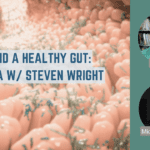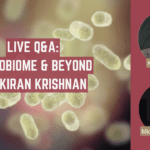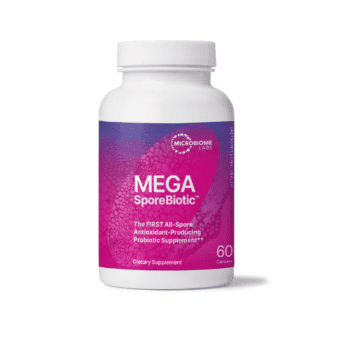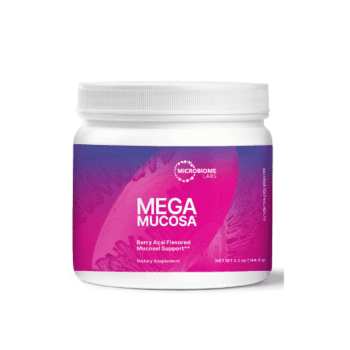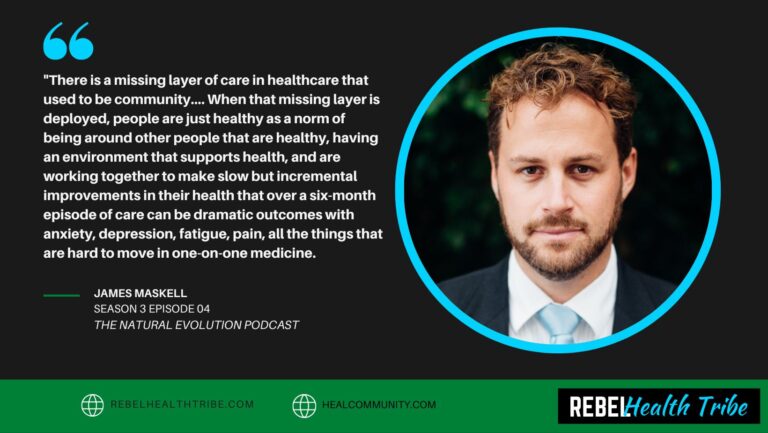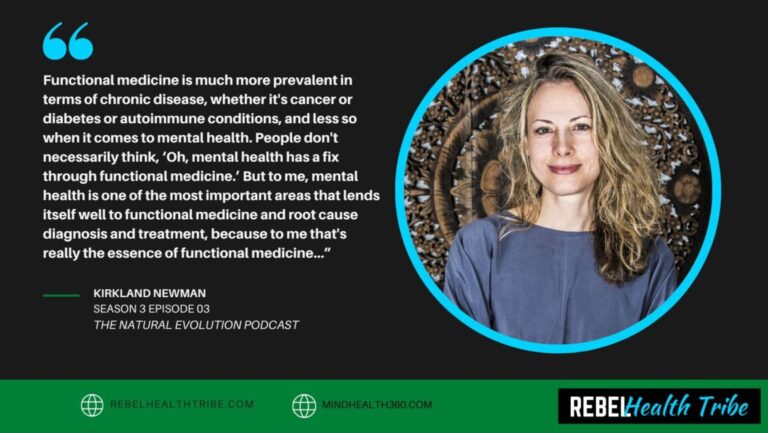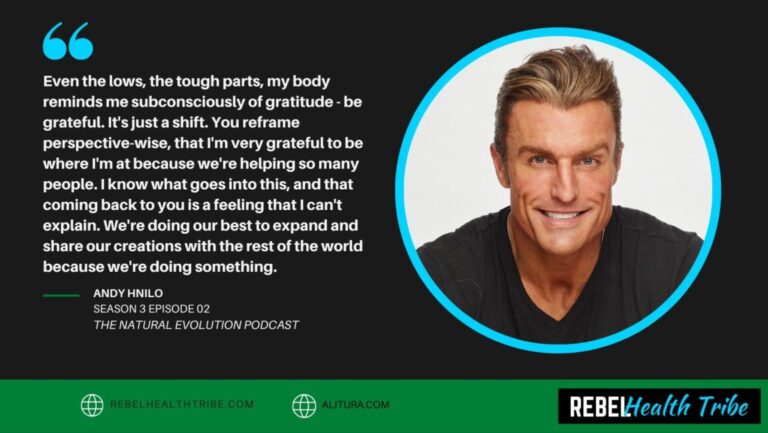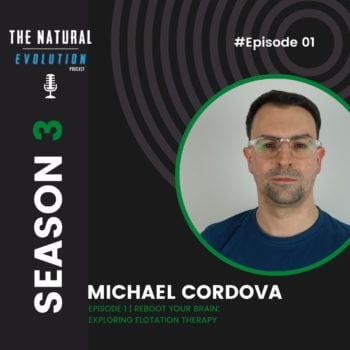
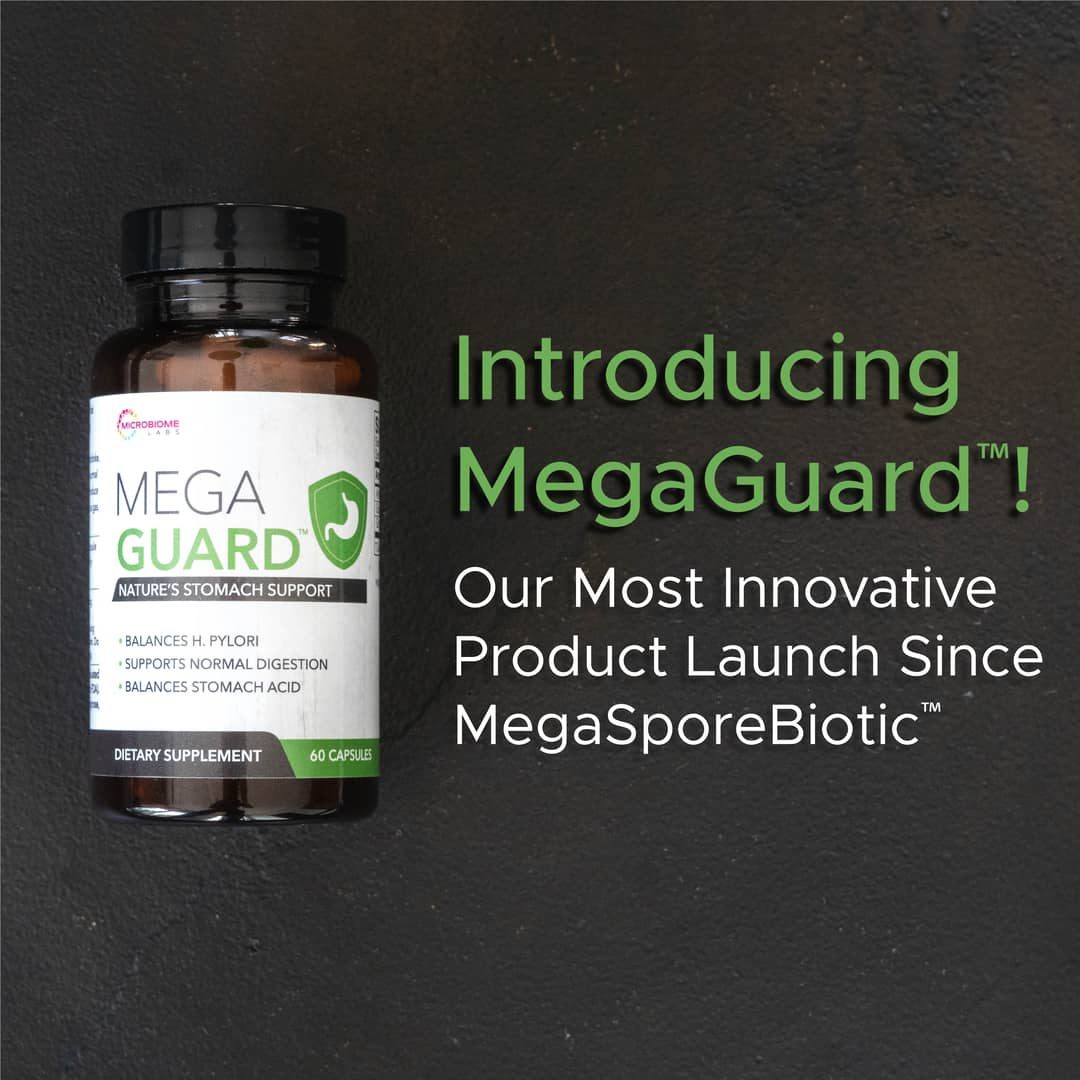
More Posts from
AutoImmune & Chronic Disease
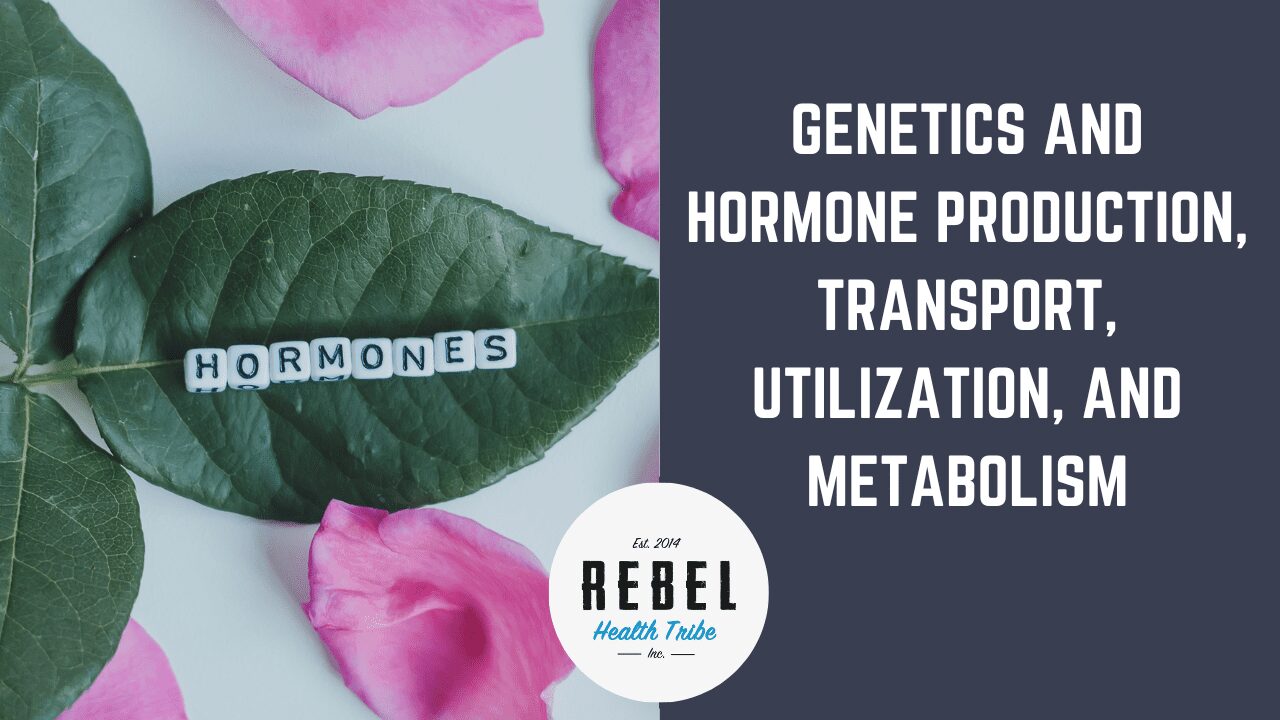
Genetics and Hormone Production, Transport, Utilization, and Metabolism
Our genetics play a larger role in our hormones than
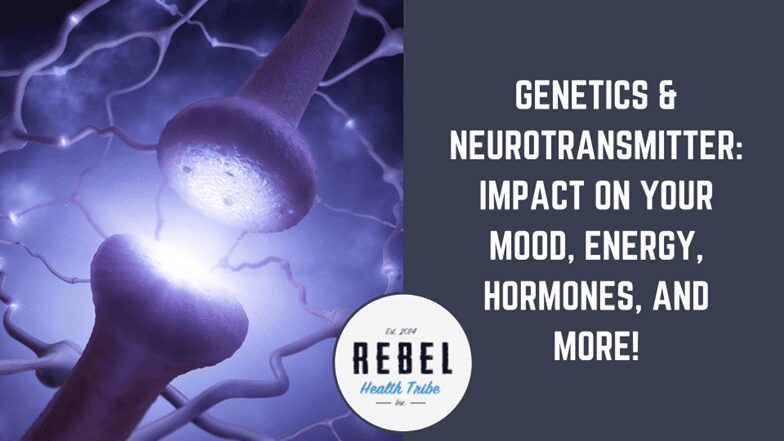
Genetics & Neurotransmitters: Impact on Your Mood, Energy, Hormones, and More!
Have you wondered why an antidepressant didn’t work for you?
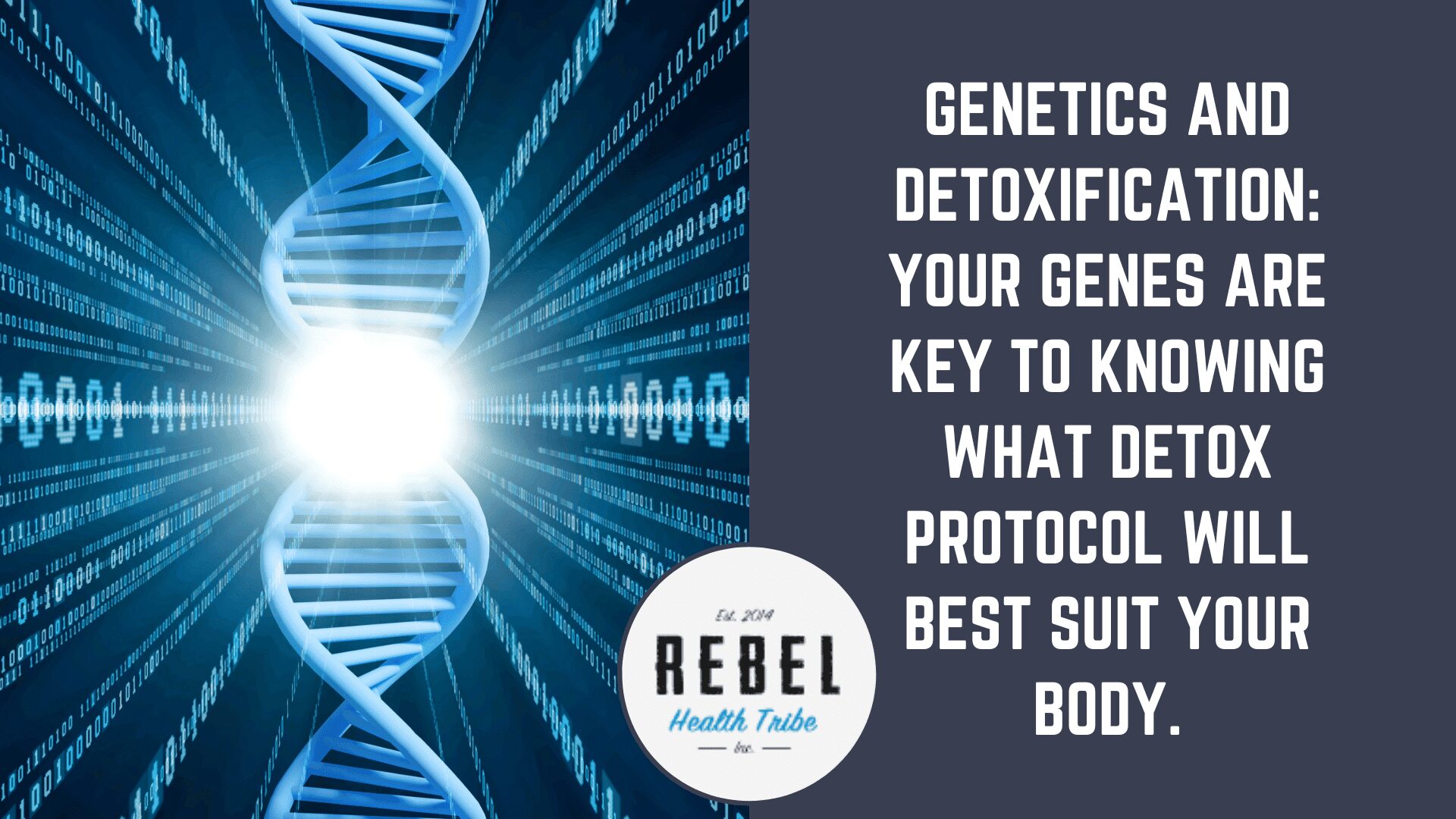
Genetics and Detoxification: Your genes are key to knowing what detox protocol will best suit your body.
https://vimeo.com/821487331 If you’ve ever bought a detox kit off
[vc_row][vc_column][vc_column_text]
Webinar Video Transcribed
Michael: Hello everyone. I think that I’m live. We’re on Zoom this time instead of Webinar Jam so it’s a little foreign to me and I’ll need to find Kiran in the attendees list and then add him as a presenter, so this may take a minute. I hope everybody was able to watch the original part one of this webinar, it was awesome, and then we got booted right when he got to the good stuff. So he was graciously able to fit us in today, we had about an hour of time where our schedules align. I’m going to be leaving to go straight to the airport and he’s got stuff this afternoon. I’m trying to find him on here and then there he is. Promote to panelist, you’re being promoted. So there we are, you’re muted.
Kiran: Unmute.
Michael: Unmuted.
Kiran: Better?
Michael: Yeah. How’s it going?
Kiran: Good, crazy. I just about four seconds ago installed a new modem.
Michael: Oh, good.
Kiran: It turns out, all day I’ve been having all kinds of problems with the internet access and I’m like, “What the hell? My internet [inaudible 00:01:25] out.” And so I’ve been calling Comcast and-
Michael: Oh, that’s fun.
Kiran: … they’re like, “We can send somebody on Wednesday.” I’m like, “Well, I happen to be invested in other webinars. I’ve got about four webinars between this and Wednesday.” So we ran out and got a new modem, just installed it, had about … Hopefully it’ll hold and we can get information out as quickly as we can.
Michael: Yeah, we’ll see what happens. I went through that when we were trying to test it out last time, I did ours of … with our internet conglomerate here trying to make things work that weren’t working and then it didn’t work.
Kiran: Yeah?
Michael: I see the chat. Hold on. Chat. Okay, so I only see a few people in the chat, everybody looks … I can see, hear, I can see and hear. Cool. It looks like people can see and hear us. It looks like it’s working and we will roll with this. I know it’s a little bit earlier than normal time. I put it on the view, you should be able to see both of us and Zoom always usually goes back and forth, back and forth by who’s talking, but I set it up so you could see both of us, so that’s what we’re going to do with it this morning or this afternoon.
Michael: There’s also it looks like no button for me to mark questions, which is easier to find on Webinar Jam, so I will do my best. I’ve got this whole long list of questions I wrote down from the other chat box, so I hope you’re ready for some questions.
Kiran: [crosstalk 00:03:03]
Michael: And I was just going to do a little recap from the last webinar, which the feedback was awesome, that was really good. The chat box went for like a solid half hour after we got cut off with people excited and wondering where we went. And this is awesome feedback or turnout for a Monday afternoon.
Kiran: Yeah.
Michael: So my understanding, and this is without reviewing any of my notes or anything like that, was that people often assume in the medical field too that people have high stomach acid and that’s why we take acid blockers, PPIs, antacids, those things. Which actually exacerbates the problem that’s already there of probably low stomach acid, which then affects the digestion of the food, it affects the PH in the upper GI which allows microbes to live there that normally wouldn’t live there, that then eat the food that they wouldn’t normally be eating there. And that small intestine is not designed to expand so that gas has to go somewhere so it goes up, creating pressure in the stomach, opening valves the wrong way, reflux acid into the throat, esophagus pain there. Is that pretty good to that point?
Kiran: Yeah, yeah, and then we really started talking about the action of bile and kind of how-
Michael: Yeah, I was going to let you summarize that part because I didn’t get it down quite as simply.
Kiran: Yeah, yeah, no worries. And just to note, I am wearing the same shirt again today on purpose so there’s continuity in the program. I don’t wear the same shirt everyday of the week, so maybe someone had noticed that-
Michael: He’s got a whole closet full of that shirt.
Kiran: Yeah, exactly. Nothing but tight, black shirts. So yeah, so there’s this really important and interesting balance and function and corelated function between stomach acid and bile. And when it comes to bile, there’s components of it of secretion of bile and then utilization of bile, what happens in the utilization part and that’s really important. So to begin with, stomach acid, as Michael summarized, is part of the innate immune response. It’s primary job is two fold, one is to break down, start to break down, the food. The second one is to add … act as an acid barrier to microbes, so it brings down the microbial load of food so that we have less microbes coming into the system and potentially taking hold in the small intestine. Because that’s an area that’s important to maintain relatively low levels of microbes. I don’t know if I gave this number before, but if you look at CFUs, so Colony Forming Units, per gram of dry stool weight in the large intestine you’ve got somewhere around two to five times 10 to the 11. So that’s anywhere between 200 to 500 billion colony forming units, so think of each one as a cell, per gram weight of stool in the colon.
Kiran: Now, in the small intestine that can be anywhere from 10 to the 6, 10 to the 7, so that’s 100,000 to maybe a million or so, depending on the section of the small intestine. So there’s a huge order of magnitude higher number of microbes in the large intestine than there are in the small intestine. That’s a really important factor and we’ll get into that a little bit more.
Kiran: The way that is controlled, in large part, there are three really important mechanisms. One is the release of stomach acid, not only from the stomach, that then ends up in the small intestine and the what we call the proximal part of the small intestine, so like the duodenum area. But then also there’s stomach acid release in the duodenum, it’s a bit of a higher PH so it’s not as acidic as what’s released in the stomach, but that’s also released as you start chewing and food starts entering the stomach. And that’s there purely to start activating the enzymes in the duodenum, these are the proteolytic enzymes that chop up proteins and allow your body to digest and breakdown proteins to amino acids. But then they also start to bring down the level of microbes, because what your small intestine does not want is when food enters the small intestine for it to start getting fermented, right? And microbes tend to ferment food sources, whether it’s proteins, carbohydrates, in some cases fat as well. So that is what is not supposed to happen, so that’s why microbial control is really important in the small intestine. Starts with the stomach acid in the stomach and then some of the acid released in the duodenum.
Kiran: Then, as it turns out, the pancreatic enzymes that are so important for breaking down proteins also have dual function in that they also act as antimicrobials. So they also inhibit the growth of bacteria during the digestion process. Because imagine if you have a certain amount of bacteria in your small intestine, food comes in, this is beautifully fermentable food, even if it’s protein, high in protein, then microbes can start metabolizing that food and growing very quickly. But your pancreatic enzymes and your acid and all that prevent the microbes from growing and prevent the microbes from metabolizing that and fermenting.
Kiran: Then the other really important component to controlling microbial growth and activity in the small intestine is bile, the function of bile. So bile is made in the liver, secreted by the gall bladder, the gall bladder secretes it into the proximal part of the small intestine. It has several different functions, one is to make fat more absorbable, it even carries certain fatty acids across the intestinal lining, it acts as a surfactant, it binds with long chain fatty acids to actually break down and kill off bacteria and then the conjugated bile salts that are part of your bile acid secretions themselves act as antimicrobials. And then finally as bile moves through the small intestine with the food and even before the food’s secreted and a little bit after food is secreted, it starts cleaning out the small intestine and then it’s supposed to mostly get reabsorbed at the end of the small intestine before going into the cecum.
Kiran: Now, about 70% of the bile ends up getting reabsorbed, some of it does end up going into the cecum which is okay if everything is healthy, if your microbiome is healthy. Because then that bile acts as a little bit of a cleaning agent right at that ileocaecal valve area so that there isn’t too high of a load of bacteria right at the juncture where the small intestine, large intestine meet. Because if there’s too much fermentive activity at that juncture then there can be too much gas production and too much pressure, which then blows open the ileocaecal valve and stuff can move back into the small intestine the way it’s not supposed to. So some of that bile does move into the large intestine, still carrying it’s antimicrobial activity to keep some of the microbial counts low at that very juncture. But then as you get farther away from that juncture, the microbial population gets higher and higher, but you do want that. So in the transverse colon and the descending colon and so on you start to get really, really high amounts of bacteria. But again you want that and the large intestine is designed to have that.
Kiran: Now, bile is really interesting because of course it gets secreted by the gall bladder, it is used up to some degree because it also, aside from dietary fat, it also binds up toxins. That’s a really important function, lots and lots of toxins that come into the body are hydrophobic and hydrophilic and bile plays both roles. So it grabs toxins, takes it to the liver for conjugation, neutralization and so on and takes it out of the body. But the bile flows through the small intestine and again, as it gets to the edge of the small intestine, there’s another thing it does, is it activates a receptor called the FXR receptor. That FXR receptor actually stimulates your intestinal lining at the end of the small intestine to secrete antimicrobial compounds to keep the microbial levels low. So that’s another function of bile, right?
Kiran: So it in itself acts as an antimicrobial, it can bind with fatty acids to act as a surfactant, that’s a different type of antimicrobial, and then the third action of bile is to activate genes in your own intestinal lining that create the secretion of antimicrobial compounds. All of those things have to occur to keep bacterial levels in the small intestine where we want it to be. Now, and-
Michael: So this bile triggers your own intestinal cells to release antimicrobials that police the intestine?
Kiran: Absolutely, yeah. And that’s through something called the FXR system and it’s a really important system. That’s one of the areas that I’m doing my deep dive in right now, because compromise in the FXR activation is related to things like colorectal cancer, Crohn’s, colitis. That is a really important set of receptors that are not only in the intestinal lining, but also in the liver. So they play a very important role in turning on and off genes that seem to play an important role in maintaining microbial balance and then also maintaining inflammation. Because as it turns out, when FXR genes aren’t activated and working the way they should, you actually start to get a huge overgrowth of microbes in the small intestine, then you get significant dysbiosis in the large intestine, and I’ll talk about how that occurs, and predominantly you get an overgrowth of gram negative bacteria. And what do gram negative bacteria have that I’ve been talking about for years? LPS.
Kiran: So you dramatically increase the amount of LPS in your intestines, the amount of LPS in your intestines increases inflammation, makes your gut more leaky, more of that leaks through. As that leaks through it actually gets into your enteric nervous system, it binds up something called the vagal afferent nerve, which then turns off your peristaltic activity and so then your bowels end up with stasis, and that stasis allows those dysfunctional bacteria to start to overgrow further. So it’s a self perpetuating process.
Kiran: Let’s talk about symptoms that people feel and what is driving those symptoms, right? And I’ve been kind of wracking my brain for a while on this whole SIBO thing. I’ve had the opportunity and honor to work with a lot of the big SIBO docs and SIBO is not making sense to me and the way we’re going after SIBO certainly doesn’t make sense. We have almost no success rate with dealing with SIBO in functional medicine and I think our understanding of SIBO is completely off. Because the simplistic understanding of SIBO is that in the terminal end of the small intestine, so more in the ileum, so that’s the end of the small intestine, we get an overgrowth of bacteria, right? For a while they were talking about a lot of that overgrowth comes from contaminants that come in with food, so food poisoning being associated with it, or the overgrowth comes in from bacteria from the large intestine moving up.
Kiran: Now, and a couple of years ago, I start talking about the issue of stasis associated with SIBO and the SIBO in stasis is just the halting of bowel movement in general. So it’s both the peristaltic activity, that muscular contraction that moves stuff, but then also the migrating motor complex, which is more of an electrical sweeping within the gut. I started talking about that and then that’s kind of become now … and not because of me but other people are realizing that stasis is an issue within SIBO as well. So we’re starting to see … Oh, do I have my mic on? Can you hear me pretty good, Michael?
Michael: Yeah, yeah.
Kiran: Okay. Actually my mic is not even on me.
Michael: It’s picking up pretty well. I mean you can add it, but …
Kiran: I’ll add it just in case. And so now though what we’re getting is a lot of people who have what they think is SIBO and often is diagnosed as SIBO with symptomology that doesn’t match that pathophysiology, right? So if SIBO is occurring because there’s an overgrowth of bacteria, especially at the terminal end of the small intestine, and as fermentable carbohydrates come in, those bacteria ferment them and produce a lot of gas, either hydrogen gas or methane, and that’s what gives you the bloating and distension. That doesn’t explain the hundreds and hundreds of people I’ve talked to who have either been diagnosed with SIBO or think they have SIBO, who seem to get bloating and distension right when they eat, right?
Kiran: And a lot of people who say they have SIBO, they say, “I can’t eat anything. Even when I drink water I get bloated and inflamed.” I was talking to somebody at a conference I was at this weekend, it was a doc, and she works with a lot of SIBO people and herself has SIBO and I was saying, “How long after you eat do you get this bloating, distension and discomfort?” And she said, “It’s almost immediately once I start eating.”
Michael: Well, the bugs would take time to eat the food, to make the gas, to cause the bloating.
Kiran: Exactly.
Michael: Right?
Kiran: And not only would the bugs take that long, but it takes a while for the food to get to that area, right? The overgrowth-
Michael: It doesn’t just plow right into your small intestine when you swallow it.
Kiran: Exactly, right. You’ve got 20 feet of small intestine and your stomach to get through, right? So the emptying time to get … for the food to get to that location itself in itself is a few hours. So if SIBO was what the way we keep thinking about it, then after you eat, whether it’s … you could eat a full meal of fermentable carbohydrates, it should take at least an hour or two, at the least, before you start to feel any sort of bloating, distension or discomfort, right? It shouldn’t occur right away. And drinking stuff like water shouldn’t make it happen right away. Waking up in the morning with your gut bloated shouldn’t be occurring because in the morning your gut should be basically empty, your small intestine. But a lot of people with SIBO tell me when they wake up in the morning their belly’s distended and it’s uncomfortable. In some cases you wake up in the morning, you have diarrhea right away and there’s a lot of people with that type of issue as well.
Kiran: So taking all of these things into account, we’re not explaining the issues with the stomach and the small bowel in the correct way when we talk about SIBO. Now, when we start digging into those symptomologies, what can we associate with those more immediate responses? And then the SIBO, what we perceive to be SIBO-like responses, with shorter term response against eating food? Now, if you have dysbiosis in your stomach, so you’ve got an overgrowth of H. Pylori, you’ve got a dyspepsia issue and you’ve got a significant reduction in HCL production, and then an overgrowth of bacteria in that junction between the end of the stomach and the beginning of the small intestine, or even in the stomach itself. One of the things that occurs with this type of dyspepsia, the disfunction in HCL production, is that the stomach goes into spasms when you eat food, right? So if you eat food and then shortly after starting to eat your first bite you start to feel tightness, cramping and bloating in your gut area then it’s happening in the stomach and that is typically driven by dyspepsia and an issue of gastric emptying.
Kiran: One of the things that occurs that a lot of people talk to me about is it takes a long time for them to feel like the food is moving through their system, right? So they eat and then you just feel full and bloated for a long time, that is an issue of gastric emptying. So the food is entering the stomach, it’s causing spasms in the stomach lining, if H. Pylori is high, that’s also associated with not having enough stomach acid and you’re not breaking down and forming the right food bolus and you’re getting inflammation in the stomach. Then you might even start getting some fermentation at the end of the stomach or the beginning part of the small intestine as food slowly drips into the small intestine and that is starting to cause gas pain in the proximal part of the small intestine and even in the stomach. So then you’re increasing gastric pressure and that increasing gastric pressure alone can drive gird and reflux, right?
Kiran: And then the other thing that’s not happening is the food is not dumping into the small intestine in the way that it’s not supposed to, so that’s called gastric emptying. It’s staying in the stomach for way too long. Part of the stimulus for the stomach to empty into the small intestine is that there are bitter receptors in the proximal part of the small intestine that have to be triggered by certain compounds in your diet, by bitters in particular in your diet and those bitter receptors trigger gastric emptying into the small intestine. Now, those bitter receptors when you’ve got a dysbiosis in your upper part of your GI don’t function the way they’re supposed to function and so you get slow emptying from the stomach into the small intestine, you’re getting spasming in the stomach and you’re getting this constant feeling of fullness and maybe even cramping and lots of discomfort shortly after eating.
Kiran: It’s not the classic SIBO that people are talking about because that could not occur for at least a couple hours after eating, right? So now imagine your food finally has made it’s way, starting to make it’s way into the small intestine. Once it’s in the small intestine you’ve got poor peristaltic activity so it sits there for a while as well. And you’ve got low HCL entering the small intestine, so now you already have an overgrowth of bacteria in the small intestine, you’ve got low bile flow because either, A, your liver is compromised and we’ll talk about what they found in people with cirrhosis, or your gall bladder is compromised. If your gall bladder’s compromised and the microbiome of your gall bladder is dysfunctional, you’re not going to be releasing your bile the way you should. And if you’re not releasing the bile you way you should, we’re not keeping microbial control in the small intestine and the food is just allowed to sit in the small intestine because the peristaltic activity is also compromised.
Kiran: As it’s sitting there, what’s happening is it’s starting to putrefy. You start to actually get fermentation and overgrowth of bacteria, rather than digestion and absorption of nutrients. So a lot of times people that have this type of, what we call, SIBO problem, also have a problem with putting on weight, right? You tend to be really, really small, have a hard time absorbing nutrients which then impacts everything else in your body. And then as the bile flow is decreased and you’re not getting enough bile acids in there, then the gram negative bacteria are increasing and as they ferment in your small intestine, they cause inflammation in the lining. And because they are gram negative bacteria, they’re also releasing more LPS, and more of that LPS is leaking through your intestinal lining, getting into your enteric nervous system, moving to your vagal afferent nerve and, again, continuing to stop the bowel movement, the peristaltic activity.
Kiran: So it’s a self perpetuating problem. If bile is not flowing, you’re getting dysbiosis and overgrowth of gram negative bacteria, that in itself will cause a slowing down or a stopping of your bowel which, that in itself, will continue the overgrowth and the dysbiosis within the small intestine. Now, here’s a couple of things that’s interesting, is that some of the things that we do to combat this actually can be antagonistic to having a proper function of this entire system, right?
Kiran: So one of the issues is increasing protein intake, because what happens is you’re getting metabolization of protein in the small bowel, and with metabolization of protein in the small bowel you’re producing more ammonia, you’re producing more p-cresol and you’re producing a couple other toxic compounds that actually dramatically affect the intestinal lining. What they also do is they dramatically impact the liver. So we did a study on a condition called hepatic encephalopathy, hepatic encephalopathy is people with end stage liver disease, so their liver is … it’s a great example of people who have compromised liver function, and when they eat protein and they produce these toxins the liver cannot clear these toxins. So it makes their gut super leaky and it allows for these toxins to leak into their system, inflammation goes way up and then the ammonia that’s being produced from protein digestion gets leaked into the blood and actually can go in the brain and cause swelling the brain and they can die very quickly. These people with end stage liver disease can die from just eating a few grams too many of protein.
Kiran: Now, that’s an extreme case, but it illustrates what happens when your liver is under stress and not functioning the way it should in order to detoxify the body from protein digestion, right? So one of the things we do when we think we have SIBO is we dramatically reduce our fermentable carbohydrate intake, and in order to make up the caloric and the bulk content we increase protein intake. That in itself can be a huge antagonist to improving the condition because the … And I’ll talk to you about another thing called secondary bile salts. But that’s one of the big dysfunctions.
Kiran: The other thing is increasing fat intake, right? So if you increase fat and if your gall bladder is not actually squirting out the bile that you’re supposed to be putting into the body, you could stimulate some increased bile release and that could be beneficial. However, if you have dysbiosis of bacteria in your gut that actually creates something called secondary bile salts, then you’re actually going to make your problem worse. Now, not to make all of this more confusing, but part of the dysbiosis that you see in these conditions is an overgrowth of microbes like certain types of Clostridia, there are about five different types of Clostridia that cause significant dysfunctions. You have an overgrowth of Enterococcus and Enterobacteriaceae, Klebsiella is another one and believe it or not Lactobacillus as well. So Lactobacillus is a agent in this that actually creates more of a problem because all of these microbes promote the metabolizing of our bile into something called secondary bile salts or secondary bile acids. And what those secondary bile acids do is they don’t get absorbed in the small intestine and which goes back to the liver and comes back and is recycled, they actually move into the colon and create significant dysbiosis in the colon and significant inflammation in the colon and oftentimes can also lead to chronic diarrhea.
Kiran: If you start researching secondary bile salt you’ll see how that’s one of the most active areas of research in colon cancers, because it’s heavily associated with inflammation and dysfunction in the colon, which leads to Crohn’s, colitis and so on, right? So then these dysfunctional bacteria create these secondary bile salts by metabolizing your bile, they’re also the same type of bacteria that produce more ammonia and precasol and all that when you feed them too much protein, right? So that is a really important factor to think about and remember, is the importance of the toxicity of secondary bile salts and these bacteria kind of taking over, versus the gram positive bacteria that actually reduce secondary bile salts. Now, a lot of people with these conditions which we think of and name as SIBO, which to me is a whole bunch of issues in one-
Michael: It’s like IBS.
Kiran: Yeah, IBS in general, so we’ll just call it Irritable Pissed Off Bowel Syndrome. The Pissed Off Bowel Syndrome, a lot of those people have said they can’t take conventional probiotics, right? Or they can’t do fermented food which tend to be fermented with Lactobacillus. One of the reasons for that is because the Lactobacillus in there actually increases the formation of secondary bile salts, which actually increases inflammation, leaky gut, dysbiosis not only in the small intestine but in the large intestine as those leak into the large intestine and then also increases the risk for long term issues like Crohn’s, colitis and colonic cancers as well. So that’s where the sensitivity comes from.
Kiran: And then a lot of the people with these conditions also are dairy sensitive, right? As it turns out milk fat in certain types of milk protein actually increase microbes that make more of these secondary bile salts. Gluten is another one that feeds certain types of bacteria that increase secondary bile salts. It’s a significant problem and this is seen in people who have their gall bladder removed, so studying patients who are healthy normals, who have their gall bladder versus age matched people who have their gall bladder and then get their gall bladder removed, one of the predominant changes you start to see in those people’s microbiome is an increase in gram negative bacteria in the small intestine. And then you start to see, which has more LPS, and then you start to see an increase in microbes like Clostridia and potentially Lactobacillus and Klebsiella and Enterococcus that actually produce secondary bile salts, right? So those are characteristic of the dysfunction. And so that is just how we paint all the pictures, how we paint it all together.
Kiran: So the severe cramping and the inflammation and the bloating can start in the stomach with the stomach in itself being distended and spasming and then not emptying into the small intestine effectively the way it’s supposed to. But then once it finally empties into the small intestine the bile dysfunction leads to an overgrowth of bacteria in the small intestine so you do get more fermentive action in the small intestine. But on top of that you get microbes that are producing secondary bile salts that increase inflammation in both the small and large intestine and then now you have increased LPS producing bacteria so you get more leaky gut and you get more systemic inflammation as well. And then that LPS also goes and affects the vagus afferent nerve and stops the bowel movement so there’s more putrification that occurs as well. And there’s a bunch of other things as well but I don’t want to overwhelm people, but that’s kind of what you’re seeing in terms of what’s happening in the small bowel and that can be felt as reflux or gird, so either just simple acid reflux or gastroesophageal reflux, or bile reflux. All of that occurs because of gas formation and inflammation in different parts of the small bowel and the stomach and what is refluxing is determined by where the pressure is.
Kiran: If the pressure is right in the stomach, right at the end of the stomach at the beginning of the small intestine then you’re predominantly refluxing acid back into your stomach. If it’s in the farther down in the small intestine, away from the border where the stomach and the small intestine meet, then you’re going to get more bile refluxing up there with stomach acid. Or you can get all the way further down in the small intestine where gas is being produced and that can reflux a whole bunch of things including food particles up your system. But that immediate bloating, discomfort, cramping when you eat or even when you drink water, that is your stomach going into spasming, not dumping in. Once the food is in the small intestine it’s actually getting putrefied and fermented and causing inflammation, you feel that as cramping, distension. It can feel really, really uncomfortable if your intestines are jumbling up and then all of the sensitivities start to start, start to come about. Of course sensitivity with dairy and gluten and all that is immediate because of what those proteins actually do in terms of the types of bacteria they feed. But then because of the constant inflammation you can also become hypersensitive to lots of antigens coming in and then you end up with hypersensitivity of all kinds of titrate components.
Kiran: So what does all this mean? Well, at the end of the day we’ve got a dysbiosis-
Michael: That was going to be my question.
Kiran: Right? That’s a lot of info.
Michael: I don’t even need to be here, just go ahead.
Kiran: I follow your thinking, I’ve learned how you think, Michael, and I know you’re always edging away at all kinds of stuff.
Michael: Well, I’m answering them over here. The one question that fits right here, the stomach bolus doesn’t leave until it reaches a certain PH too, right?
Kiran: Yeah.
Michael: So is that true or is that kind of urban legend, or?
Kiran: No, I don’t think there are that sensitive PH meters in your tummy that’s detecting that.
Michael: Okay.
Kiran: The best stimulus for gastric emptying seems to be bitter receptors in the proximal part of the GI. They also, the bitter receptors, also start the large intestine getting ready for fermenting certain types of carbohydrates and then producing compounds like short chain fatty acids that start to create a sugar balance. So that is just the same as chewing starts to increase secretions, gastric secretions, as your body anticipates food coming down, it’s preparing that area for food. The response of bitter receptors in the proximal part of the small intestine prepares your large intestine and also the end of your small intestine for food to come through. That’s, based on the literature, that’s the biggest stimulus for it.
Kiran: PH might be a stimulus, but I don’t think it’s that specific where it’s like a PH of 4.5 would stimulate, but a PH of 5 would not, or a PH of 4.9 may not. I don’t think that’s as sensitive there.
Kiran: So here’s the things we have to deal with, right? To try to start alleviating this entire quagmire of issues, all of which are self perpetuating. Because remember when any one of those things become dysfunctional, your stomach acid or your bile secretion, or the conjugation of bile and the deconjugation of bile, any, and then the peristaltic movement and the stasis in the bowel, any of those things become dysfunctional is actually promotes the dysfunction of the other stuff, right? And eventually what people have is all of it. You have dyspepsia, you have low gastric emptying, you have low enzyme secretion in the small intestine, you have low bile secretion, you have to much conversion of bile, conjugative bile to secondary bile, you’ve got stasis in the bowel, you’ve got leakiness in the bowel. All of these things that occur, these things are driven by things like antibiotic use, the Western diet. There have been a few studies that show the Western diet which is this highly processed, tend to be higher fat diet, even those that are eating quote-unquote healthy tend to get higher protein than carbohydrate sources, especially plant based carbohydrate sources which are the most important ways of getting your carbohydrate sources of course. They tend to have this type of characteristic, dysbiosis in the small bowel and dysfunction of bile both in the small and large bowel as well. So all of these things lead to it.
Kiran: So now here’s what we have to deal with. We have to deal with low HCL, we have to deal with poor gastric emptying. So we have to deal with dyspepsia, HCL issues, low gastric emptying, we have to deal with poor dysfunction in bile flow. And then we have to deal with the dysbiosis in the small bowel with, even whatever bile is being sent out, is now being converted into secondary bile salts rather than maintaining conjugated bile which acts as a antimicrobial and the trigger for that FXR receptor I talked about earlier. We also have to deal with leaky gut and LPS, that’s a major factor in all of this as well that continues to drive the problem. So that’s the essence of what we have to deal with.
Kiran: Now, when it comes to gastric motility and improving acid release, stimulating the vagal nerve can be really helpful, so things like … And I think you’ve talked about this before, Michael, like many different ways of up regulating the vagal nerve system, right?
Michael: Yeah, things like gargling, humming, singing, cold water splashes on the face, I think deep breathing exercises, diaphragmatic breathing. There’s a book, one of the doctors that Sashin Patel at Living Proof Institute, wrote a book, an entire book, on vagus nerve stimulation. The cat’s out of the bag with the vagal never, so if you go online you can find dozens of ways to stimulate the vagal nerve. And I just wouldn’t right now buy into a lot of those, they have stimulators that they’re selling. I talked to Dr. Korazian about that, who knows as much about nerves and neurology as maybe anyone on the planet and he says the only ones that he’s seen be effective for vagal nerve stimulation are highly invasive, meaning implanted inside of the head.
Kiran: Right, right.
Michael: So I’d be sketchy on those. I heard of a doctor that’s created one that might work, but yeah, pretty simple to do.
Kiran: Yeah. Well, and so I think following that book and those practices are probably the smartest ways of going about it. Where’s my camera? Oh, there it is. It went away for a second.
Kiran: So yeah, so some of the things that can be done outside of that of course, and I don’t know if anyone in this group would be smoking, but that’s my guess is probably not. But if you happen to be then that is an issue. Alcohol consumption seems to have an impact on stomach acid as well, but some of the herbs that seem to be able to improve are things like peppermint and ginger which can encourage peristalsis and can encourage some HCL release. Momentarily, if you have really low HCL and you know it or your doctor has tested it, you might use supplemental HCL that could improve the function of stomach acid. And we don’t know if supplemental HCL actually increases stomach acid or decreases stomach acid secretion in itself. But we do know if you have very low HCL then you probably need to supplement to some degree with HCL in your diet, because you need to get some acid into your stomach. And that also will help bring down the overgrowth of things like H. Pylori which in itself will start reducing stomach acid secretions.
Kiran: Things like beets and certain greens can help with gall bladder issues and HCL issues as well. But in general gastrin, it’s interesting, one of the things that I think and I’m looking for more studies on this, but one of the things is all of the antihistamine use and maybe overuse of things like Corsitin could have an impact on HCL secretion as well. Because one of the biggest stimulators of stomach acid secretion that’s through the gastrin pathway, which is a hormone that causes the release of stomach acid, is histamine. So histamine is one of the main signals for stomach acid release. So if we’ve gotten to this point where we have a lot of people that are histamine intolerant and you’re basically eliminating or reducing high histamine foods or we’re using compounds to reduce histamine production in the body like Corsitin or other herbs, that actually might have an impact on gastric secretions as well.
Kiran: There isn’t a clinical trial right now that I’ve seen where antihistamines can reduce stomach acid secretion. But there are lots of trials showing that histamine is one of the main signals for release of stomach acid. So if you’re taking antihistamines that may be an issue, a side effect of the antihistamine is a slowing down of the gastric secretions.
Kiran: Couple other things to think about then is we need to improve gall bladder function. So beets seem to increase gall bladder function. And then bitters, bitters become really important in terms of improving gastric emptying and then some can even increase bile flow and that’s kind of how we formulated our mega garden and I’ll talk about that at the end of this. But we need to improve bile flow, we need to improve the gall bladder health and gall bladder function. Then we also need to support liver function because as you’ve got all of these problems, the liver becomes more and more toxic over time because it’s trying to clear all of the toxicity, all of the aberrant fermentive products that are being produced in the small intestine that shouldn’t be produced there. Bacterial toxins of course, food toxins and microbes coming in because there’s a high abundance of microbes coming in because the stomach acid is not doing it’s job, it’s not low enough, PH-wise, it’s not low enough to bring down the microbial load. So you’ve got your liver that’s undergoing a lot of stress as well, so the liver needs to be supported. We know things like milk thistle can be really supportive of the liver and then we’ve got certain foods and bitters that can be supportive for the gall bladder. But we do need to increase bile flow as well.
Kiran: And then ultimately one of the things that has to be done is we have to reduce the production of secondary bile salts, right? So secondary bile salts being converted from conjugated bile that’s our natural bile that’s secreted into the small intestine is one of the most toxic things in the small intestine and in the large intestine as well. The things that significantly reduce the formation of secondary bile salts are antioxidants and polyphenols. So polyphenols from green tea, from black tea, antioxidants, things like catechins, things that are found in red wine and so on. Those things are really powerful at reducing the formation of secondary bile salts.
Kiran: So if you have something that you think of that you think of as SIBO, you get lots of bloating and discomfort and reflux, once you eat then you want to increase polyphenol intake, you want to increase antioxidant intake, you want to increase, and this is counterproductive, but resistant starch and complex carbohydrates that end up in your large bowel. Because the formation of beta-8 and short chain fatty acids counteract all of this and act as a healing process to it. So that huge reduction in the intake of fermentable carbohydrates when people have these types of symptoms actually drives the condition even more because you’re not getting any of the healing aspect of short chain fatty acid production in the large bowel and the large bowel continues to go further into dysbiosis as well. So the small bowel is, in this case, driving large bowel dysbiosis.
Kiran: So a couple of these thing. Oh, curcumin, there are a number of studies that show curcumin and especially curcumin along with certain polyphenols significantly reduce secondary bile salt production. So that’s a really important compound to take. Polyphenols of course can be taken as supplements, you can be getting them in colored fruits and vegetables as much as you can. And then another thing people with SIBO-like symptoms, they will often reduce the intake of fruits quite a bit because they’re afraid of the sugar in the fruit. But then you’re also significantly reducing your polyphenol intake, especially the keratinoids and the colored antioxidants which play a very important role in fixing the dysbiosis in the small bowel. They bring down the production, sorry, the prevalence of those fermentive bacteria, especially the ones that are producing the p-cresol and the ammonia gas and the secondary bile salts as well.
Kiran: If you look in cancer research right now there’s a lot of work going on in certain antioxidants and this is part of the mechanism of how curcumin helps a lot with cancer, is because these antioxidants and polyphenols significantly reduce the formation of those secondary bile salts and bring down the growth of the bacteria that produce them. And those microbes and their production of secondary bile salts are correlated and associated with high risk of cancers and other inflammatory conditions. Even starting as simple as allergies and then moving onto things like more serious things like Crohn’s, colitis and colon cancers and so on. So that’s the thing.
Kiran: So rutin is another fiber that’s found in certain types of fruits and vegetables, things like apricots, I looked up some cherries, grapes tend to have a lot of rutins. Catechins of course from tea, dark chocolate, wine. These things are really important in stopping secondary bile salts. And then other acids, sorry, other similar polyphenolic acids that are found in herbal tea extracts can be really useful as well.
Kiran: Caffeine, if you are someone that has these conditions or you have IBS with diarrhea or SIBO with diarrhea, you want to dramatically reduce your caffeine intake because caffeine dramatically increases small intestine and gastric secretions. But not in the good way where it actually increases the secretions and increases the passing along of secondary bile salts that actually can cause diarrhea in the large bowel. So temporarily you could slow down or reduce your intake of caffeine. Intake of caffeine when your gut is somewhat healthy can be an overall good thing, but if you’re experiencing diarrhea all the time or loose stool then you want to significantly reduce your caffeine intake.
Kiran: I would also say to reduce your protein intake and because of course the protein becomes fermented by these microbes into more toxigenic compounds. And then you also don’t get appropriate digestion of protein and you can end up getting absorption of long chain peptides into the … to circulation as well. And those long chain peptides become cross reactive for components in your brain and so on, so they can cause cognitive dysfunction and all that. So it becomes also really important then to take a digestive enzyme, because a good digestive enzyme will ensure better protein digestion so you don’t end up getting small peptides absorbed or peptides getting putrefied in either the small or large intestine through this dysbiosis.
Kiran: The spores in megaspore can reduce the growth of these microbes, different classes of Clostridia, things like Klebsiella that increase the formation of secondary bile salt. Of course you want to stay away from Lactobacillus based probiotics because Lactobacillus in itself generates an enzyme called BSH which increases the production of secondary bile salts. And then fermented food that are fermented with Lactobacillus you want to be very careful of as well because those are not going to help the situation.
Kiran: So then when we started looking at this problem, we were looking for compounds that could help with some of these issues right in the beginning. Especially with the stomach and the gall bladder and the secretion of bile salts. And that’s how we formulated MegaGuard, right? So we went to a lecture and we found it fascinating, there was this company that created a new derivative of deglycerized licorice that actually is far more potent in it’s function as a dyspeptic tool and then also in it’s function of controlling H. Pylori. And so they found that you could use a fourth of the amount that people typically use of BGL and you get a much better clinical effect and so we wanted to start working with that particular product. But then we wanted to also address the activation of the bitter receptors in the proximal small bowel to improve gastric emptying and we also wanted to address the secretion of bile by the gall bladder so that you get an effective amount of bile being secreted. And that we addressed through the use of a artichoke extract, a very special artichoke extract that’s actually a prescription drug in parts of Europe, in particular in Germany.
Kiran: So they use it quite a bit for improving gastric emptying and improving bile flow from the liver and the gall bladder. Especially in people with liver cirrhosis or gall bladder dysfunctions, or people that have a history of gall bladder being basically bound up, the secretion ducts, being bound up by the formation of crystals and all that. So it improves the secretion of bile acids and it improves then the peristaltic activity.
Kiran: The other thing that both of these compounds do is they’re antispasmodic, so they reducing the spasming in the stomach itself, which then reduces that cramping and full feeling. And because it also improves gastric emptying, that full feeling goes away sooner and you don’t get that distended, cramping, full feeling in the stomach as soon as you eat. You actually get the control of H. Pylori which then can improve stomach acid production, you get the antispasmodic so the food bolus can actually be formed appropriately, mixed in with all the pepsin and the HCL like it’s supposed to and then empty into the small intestine.
Kiran: Now, in the small intestine you get better, you get improvement in bile release so you get low microbial fermentation and you get better emulsification and absorption of fatty acids and then also of toxins that are coming in. And with that improved bile flow, the bile goes ahead and starts to kind of clean out the small intestine to some degree so that as the food is moving through the small intestine you actually get less fermentive function from microbes in the small intestine because the bile has gone through and brought down the growth of the microbes quite significantly. That in itself can help bring down the growth of some of these bile deconjugating bacteria that produce the secondary bile salts, but more important than that are the polyphenols that are found in the licorice extract and the artichoke as well. And then the other thing that helps with that is ginger, ginger also reduces inflammation and it acts as an antispasmodic and that also helps soothe the movement of the food through the small intestine.
Kiran: Now, when you combine this MegaGuard product which is what we created to address this entire issue, when you combine that with the spores, the Megaspore, which helps control the production of ammonia and p-cresol by the fermentive bacteria in the small intestine, you combine that and then you combine it with the MegaMucosa that has the really important polyphenol mix. All of those things put together create a total restoration of everything from the stomach all the way down to the distal colon. When we were looking at all of the things that we’re doing, we first initially focused on the colonic microbiota in large part because that’s where a lot of dysbiosis is, but also dysbiosis there can be very significant because there’s so many microbes. But then we knew in the back of our mind that as we’ve developed spores and prebiotics and probiotics and all of that stuff that addressed the small intestine well, sorry, the large intestine well, we need to also start addressing the stomach and the small intestine. And that’s where the MegaGuard comes in, right? So that’s a really, really important product and pairs extremely well with the Megaspore and especially the MegaMucosa because the MegaMucosa is going to play a significant role in reducing the inflammation and the damage that’s occurring in the small intestine.
Kiran: It’s interesting, when they look at people with cirrhosis of the liver as cirrhosis increases, there are studies that have measured the small intestine microbiota as cirrhosis increases. Because as cirrhosis increases then bile flow becomes reduced significantly, right? And they see up to a 10 fold increase in microbes in the small intestine and in particular they see these microbes that actually produce secondary bile salts and ammonia and so on.
Kiran: So in our study with the Subtilis and this is just the Subtilis at a high dose, this is what that HU58 product is, this was a study in the hepatic encephalopathy, the end stage liver failure people who are very sensitive to ammonia production and p-cresol production. We saw a 40% reduction in blood ammonia levels in these individuals when they took the HU58. And these are people who are all also on [Refaximate 00:53:37] at the time and Lactulose which is a synthetic sugar that’s designed to bring down the ammonia and the bad fermenting bacteria in the small intestine. The HU58 did that quite significantly.
Kiran: So if you have SIBO or what you perceive to be a SIBO or you meet some of the symptomology that I talked about today of as soon as you drink something or eat something, you start to get that distension and tightness and fullness in the stomach in itself, you feel full for a long period of time, it takes a while for your gastric system to empty and for food to move through your intestine. A lot of people tell me they feel like the food is just sitting there, it’s not getting … it’s not moving through, you feel inflamed, you feel cramping, you might be one of those that ends up with chronic diarrhea or chronic constipation. Either one can happen depending on the amount of secondary bile salts moving into the large intestine. And then on top of that you have food sensitivities, you can’t do dairy, you can’t do Lactobacillus based probiotics, you can’t do fermented foods, all of those things are highly sensitive to you. All of these things put together mean that you have this orchestra of dysfunction in the stomach and the small intestine that also then leaks into the large intestine.
Kiran: For that, the MegaGuard taking a minimum of two just before your meal, I would recommend somewhere between 10 to 15 minutes before your largest meals of the day. Taking that will significantly help and then with the meal using the HU58 if you have a severe bloat type of response, because we saw that in the cirrhosis liver patients in our study. And then taking the Megaspore as well which helps also reduce ammonia production quite significantly, increases short chain fatty acid production, which means it flips the type of fermentation going on in your gut. And then taking the MegaMucosa which also has the high amounts of polyphenols which inhibit the formation of secondary bile salts.
Kiran: So that’s a lot of stuff. Now at the same time, you might want to reduce, especially if you have the diarrhea version of this, you might want to reduce dietary fat intake for a little bit. But the types of fat doesn’t seem to matter as much, so reduce it a little bit but certainly reduce your protein intake, because the protein is driving a lot of the aberrant fermentation that you shouldn’t want … that you shouldn’t have. So a lot of people will go to eliminating fermentable carbohydrates and increasing protein intake, that can actually have a long term dysfunction.
Kiran: And the use of antimicrobials, many of the antimicrobials don’t have any specific killing of just these gram negative bacteria or these fermentive bacteria or the ones that produce secondary bile salts. So you’re likely continuing to cause dysbiosis. Maybe initially an antimicrobial that has more specificity, something like Biocibin can be useful to start bringing down some of the microbial load. But you would do that then before your meal and then take your MegaGuard after the antimicrobial, about 30-40 minutes after the antimicrobial and then eat. And then with your food do the HU58 and the Megaspore. And I’ve worked with a few people through this protocol and we’re seeing so far really impressive changes in their response to food in general.
Michael: Wow. Okay. This is the most multitasked I’ve been during a webinar. I was trying to answer questions in the Q&A in the chat box, take notes on what you were saying and write down all the questions because I have to go to the airport.
Kiran: Yes. Oh yeah.
Michael: So at some point in the next few weeks we’re going to have to try to do a part three because there’s a million questions. So I think you laid out really well everything with the bile, everything with the symptoms and how they’re all connected and where the treatments tend to go sideways. Because I’ve seen that too, SIBO has really started to be a really huge thing when I actually stopped working with clients a few years ago. And now it’s in every forum and chat thing and group that I’m in and everybody seems to be like, “Just pound thousands of antimicrobials and don’t eat this food and don’t eat that food.” But then it either goes away, comes back, goes away, comes back and it’s like they’re not addressing lifestyle factors, they’re not addressing other things like circadian rhythm has a big play on bile release, bile production, quality of bile, things like that. Dave Mayo in our Facebook group in Rebel Health Tribe has done a lot with circadian and posted a lot of connections with bile with circadian rhythm too.
Michael: But this is the most I’ve ever heard it kind of make sense, starting from webinar one to webinar two. I also was trying to track your protocol there. This is going to be nonsense when I go look at it at some point. But I’ll have some time to digest this. But I do have this many questions from the first webinar which weren’t related to anything from today, and then there’s a bunch of them over here that I’ve written down onto this paper and this paper.
Kiran: Can you copy those questions from the chat?
Michael: I’ve actually had to write them all down because I don’t know on Zoom.
Kiran: Yeah.
Michael: And I didn’t want to risk losing them. So I’ve been writing them all down, I think I have them all. So I can either send you all of these questions, which I don’t know what the best way to do that is.
Michael: But for people real quick, for people who want to check out the MegaGuard you were talking about. This is probably your guy’s biggest release since Megaspore as far as wide ranging benefits potentially of a product. A lot of them are more specialized, this seems to be pretty wide ranging for some problems that aren’t really seeing solutions on the market. I just put a link in the chat that is to a full breakdown of the product on our site. It has everything from the background and the research to what the ingredients are, how it functions, the science behind it, what to use it for, advantages, suggested use, synergy. It’s a full, full breakdown I just linked there.
Michael: And then also there is a code there, MEGA10, which is a $10 off, one time use coupon. You’ll find the product in the shop, it’s brand new, I actually got … ordered some for myself so that we can try.
Kiran: Oh cool, yeah.
Michael: It’s RebelHealthTribe.com\MegaGuard. I don’t know why anyone’s not seeing my … I just posted it again in the chat. I don’t know if people are not seeing my posts. All right. Well, I see it three times in there so I’m not sure. It is RebelHealthTribe.com\MegaGuard one word. So I don’t know.
Kiran: Yeah.
Michael: Oh, everybody is saying they can’t see my post. That’s so funny.
Kiran: I’m seeing it, I saw it.
Michael: Yeah, because you’re a panelist. So I have made a ton of comments in the chat nobody’s been seeing, that’s why nobody was responding to them. It was marked to go to you only. So there’s the link, there’s a one time use $10 off coupon. That’s why nobody was responding, I was confused. I kept typing in there and the people weren’t seeing it or responding. So there’s the link, the MEGA10 is a $10 off one time use coupon. You can also on that page, it’s like half way down or something, there’s a place where you can put in an email and they’ll send you the $10 off coupon.
Michael: But there is everything that you would need to know and we worked with Acacia who helped you develop the product on your end to create this post, so it literally came from the source of the research.
Kiran: Yeah. And to us this is the cousin to Megaspore. All of the amazing things that Megaspore helps do to the microbiome, especially in the large bowel and in part in the small bowel, this thing is going to be doing for the health of the stomach and the health of the small intestine. We had been thinking about these functions that needed to be addressed a while ago, even when we were first developing Megaspore as a product. But we didn’t find the appropriate ingredients that had the clinical backing. And in particular this licorice extract that’s really unique, the studies on it just came out a couple years ago and we came to learn about it a couple years and we’re very slow with product development because we’re very science focused and rigorous on what we need to put in there and how it should all function together. So in my view this is, of all the products we have outside of Megaspore, this is … this should stand next to it shoulder to shoulder. Because between those two you can address so much in the entire digestive tract and it’s the most common dysfunctions in the entire digestive tract.
Kiran: And so it’s a really exciting product for us and already, it’s only been out about six weeks, we’re already getting just incredible responses from people on it about how it’s a game changer for people. I get texts on it all the time and all that. If you just take two with each of your largest meals. We have people that take one or two every time they snack or eat something. But it helps so much, you’ll feel the significant difference in how your bowels function and move. And then you pair that with Megaspore taken during the meal, it’s a really powerful combination.
Michael: Well, I have some on the way here so we’re going to give it a shot and we’ll let you know. We’re going to have to figure it out, so I know you’re crazy busy, I’m leaving town in like now. And so we’ll have to figure out how to do the Q&A, but there’s probably more questions here than there has been for any webinars we’ve ever done.
Kiran: We can start if you would like, Michael, if you send those questions in writing. I’m going, I’m flying out to London at the end of this week.
Michael: Okay.
Kiran: So on the long flight, which I’m going to try to stay awake the whole time, I can work on answering the questions. So we could send initially-
Michael: Well, maybe we could do it as a blog post then and just post the answers and then maybe in a few weeks or something when we have an hour of congruent time we could hop on and just do a little chat around it. But I’ll do that, I will type. When do you leave?
Kiran: I leave on the Sunday, coming up on-
Michael: Oh, perfect. I get back Thursday night so I will type them up Friday and send them to you and this is recorded so I’m going to be held accountable for that.
Kiran: Yeah, yeah.
Michael: And I will give you some fun things to do for your ever so fun flights to … ever so fun flight across the ocean. Which I love going to Europe, I don’t enjoy getting there.
Kiran: Yeah, you got to do it a lot and then they treat you … your experience becomes much better. So you suffer through just doing it so many times and then you get all the fancy-
Michael: Yeah, the laying down in the little room, the things like that. Hey, our last time there was two of us and the third person in the row wasn’t there so it was like first class.
Kiran: Yeah, totally. A little [crosstalk 01:05:08]
Michael: But cool. Well, thank you so much. Thanks for fitting this in on the fly.
Kiran: Yeah, thank you all.
Michael: This seemed to work much better than the Webinar Jam situation, so we’re going to probably roll with this one going forward. I’m still figuring out a little bit the Q&A, the chat. Obviously I typed a whole bunch of comments to myself today, so … that nobody saw so we’ll see that. But head on over to the site. We’re going to get this transcribed, we’ll probably have it out by Wednesday so we’ll send out the recording with the link to this, the transcription and the link to the MegaGuard post and everything else. So thanks everyone, and we will get all the questions to Kiran and get them over to you as soon as we can. So thanks for being so engaging, thanks for 200 people showing up on a Monday afternoon.
Kiran: I love it. Thank you guys so much. I appreciate it and this’ll make a big difference so I’m excited about it.
Michael: Cool. Yeah, thanks for all your hard work and for everybody on your team too.
Kiran: Appreciate it.
Michael: So we will see everybody later.
Kiran: Yeah, bye.[/vc_column_text][/vc_column][/vc_row]
FEATURED PRODUCTS
-
MegaSporeBiotic
$59.99 – $176.95MegaSporeBiotic™ is a 100% spore-based, broad-spectrum probiotic shown to be...
-
MegaSporeBiotic For Kids Gummies
$39.00MegaSporeBiotic™ Gummies are a 100% spore-based proprietary probiotic blend that...
-
MegaMucosa
$59.99MegaMucosa is the first complete mucosal support supplement of its...
-
MegaPre Prebiotics Powder
$59.99MegaPreBiotic™ is the first Precision Prebiotic™ supplement made up of...
Get Social
Recent Podcasts
Recent Courses
Toxicity & Detoxification Masterclass
The toxicity and Detoxification Masterclass covers a wide

5-Week Functional Neurology w/ Dr. Jared Seigler
Learn how to improve your brain health and
Brain & Nervous System Masterclass
16 Leading Experts Share Cutting-Edge Science, Effective Practices,
Wellness Optimization Series
Learn about the immune system and what you
Get the RHT Newsletter
Be the first to get access to special offers, new podcasts, courses, products and events from Rebel Health Tribe.
Facebook
Twitter
Pinterest
LinkedIn
Reddit
WhatsApp
Telegram
StumbleUpon
-
MegaSporeBiotic
$59.99 – $176.95MegaSporeBiotic™ is a 100% spore-based, broad-spectrum probiotic shown...
-
MegaSporeBiotic For Kids Gummies
$39.00MegaSporeBiotic™ Gummies are a 100% spore-based proprietary probiotic...
-
MegaMucosa
$59.99MegaMucosa is the first complete mucosal support supplement...
-
MegaPre Prebiotics Powder
$59.99MegaPreBiotic™ is the first Precision Prebiotic™ supplement made...
Toxicity & Detoxification Masterclass
The toxicity and Detoxification Masterclass covers a wide array of topics with the following guests: 1. Lara Adler, Environmental Toxins

5-Week Functional Neurology w/ Dr. Jared Seigler
Learn how to improve your brain health and function with this Functional Neurology course from Dr. Jared Seigler.
Dr. Seigler
Brain & Nervous System Masterclass
16 Leading Experts Share Cutting-Edge Science, Effective Practices, and Clinical Strategies to Optimize Brain & Nervous System Health in Kids


